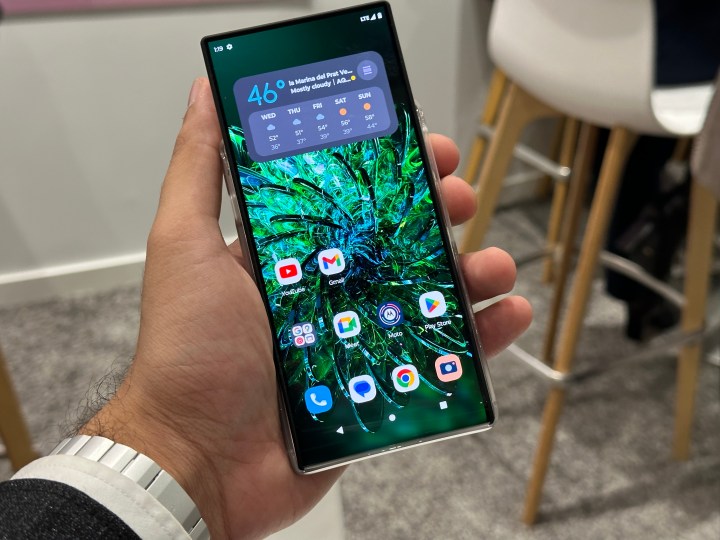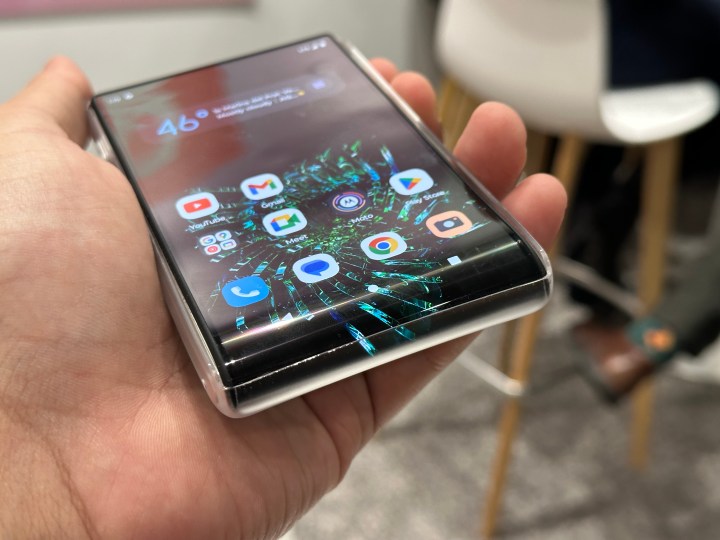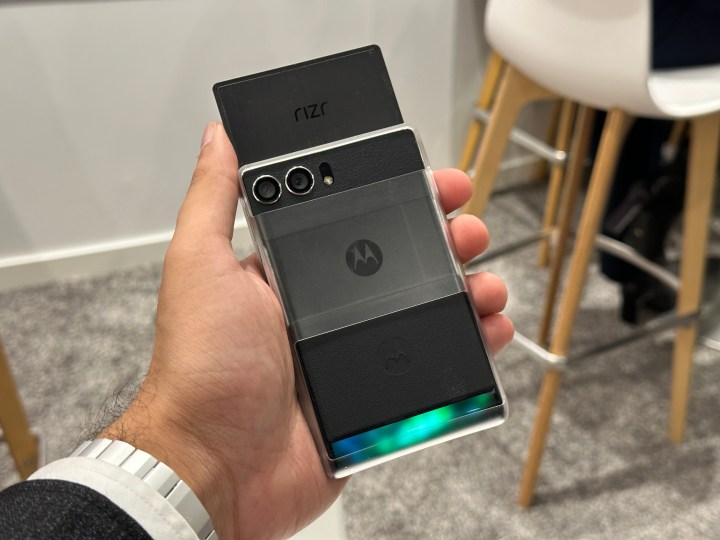I hate to be the bearer of bad news, but I don’t think the Motorola Rizr rollable phone that has gained so much attention over the past few days is ever going to be anything more than a concept.
There’s no doubt it’s the perfect device to show off at a trade show that’s struggling to stay relevant, but if you’re looking at it expecting it to actually be practical to use on a daily basis, I genuinely think you’re going to be disappointed.
I don’t have time for the rollable Rizr

The prototype Rizr (a name that harks back to a slider phone from Motorola’s history) shown at MWC 2023 has a lot of people very excited. And rightly so! It’s pure, gimmicky trade show fodder: eye-catching, different, and great for bitesize video clips shared by influencers and YouTubers. It’s also perfect for a company with nothing else meaningful to exhibit at the show, as Motorola came with, er, the business-focused ThinkPhone it launched at CES 2023.
It’s visually impressive because the screen rolls around the bottom of the phone, and then a motor extends it up over the front, converting the 5-inch device into a 6.5-inch device. It does this in a slow, considered, video-friendly fashion. It makes me say “Ohhh!” when it performs its party trick, but as it continues its painfully long and drawn-out unroll, I begin to ask, “who would actually wait this long?” The answer is no one.
Slowness introduces frustration, which immediately kills any practicality the rollable phone may have, and motorized components introduce reliability concerns. It means the rollable phone doesn’t better solve the same “problem” — putting a big screen in a conveniently sized device — foldable smartphones address; they just over-complicate the matter for some short-lived attention.
According to popular YouTuber and foldable phone fan MrMobile, Motorola said the phone can unroll a lot faster than this. So why not show it, Motorola? Why do it in slow motion? Perhaps it’s because this way is deemed better to show it off, but more likely is because it can’t unroll quickly for more than a few tries without breaking, and that would attract the wrong kind of attention — and make it impossible to put into the hands of the excitable at MWC.
A slow journey

“But wait, you curmudgeon,” I hear you shout, “it’s just a concept! Of course it doesn’t work like a final product.” I agree, except this isn’t the first time we’ve seen or heard about a rollable phone, and any actually demoed over the years make a sloth look energetic.
Motorola itself showed the slow Rizr last year, TCL has made rollable phone concepts, the Oppo X rollable appeared as a concept in 2021, Samsung hasn’t gone much further than securing patents, and LG had one waiting in the wings before it decided the mobile world wasn’t worth it anymore. That alone says plenty about the current real-world potential of the rollable phone.
Yet here we are, with another rollable phone taking its time to unroll, and I fear it’s because a fast action isn’t feasible. The base of the phone and the way the screen curves around it indicate a quicker unroll risks kinks, creases, or catastrophic damage if it gets derailed. Any motor that increases speed adds additional heat, while more speed takes more power and requires a lot of additional engineering. All that extra speed and more heat affect durability. That’s before you consider the potential damage that could be done to a fast-moving motor if the screen is accidentally activated in your pocket, or if it takes a careless person’s eye out.
Speed is everything. We get frustrated when things take a second longer than we want. Modern phones are sold on speed, whether it’s octa-core processors, 240W fast charging, or 5G connectivity. They’re advertised in a way that emphasizes power and performance, not considered actions and ponderous motions. The foldable phone succeeds and avoids this argument about speed because you’re in control of the unfolding action. It’s as fast as your hands can move and never feels restrictive.
Motorized phones have been and gone

Phones with gimmicky motorized parts are cool, there’s absolutely no doubt. The Asus Zenfone 6 had its awesome flip-round motorized camera, Oppo put motorized cameras on its N1, N3, and Find X phones, while Vivo put a motorized pop-up camera on the Nex S. I’ve used all those phones. All of them were slower than phones without motorized parts; the trend disappeared when water and dust resistance, along with greater demand for general durability, became more prevalent and desirable.
The same fate may await rollable phones before they even start. At the end of 2022, an analyst for UBI Research said Samsung — one of the world’s biggest phone brands, and maker of a lot of screens — “seems uninterested in slidable phones,” and stated the films used to protect screens can negatively affect quality on rollable devices. There are also reported issues with digitizers, an essential component. He said some manufacturers may try sliding phones to differentiate from Samsung’s foldables, but, “the market seems limited.”
I’d be very happy to be proven wrong about rollable phones. I look forward to eating my words when I’m shown a rollable phone that’s as fast, convenient, reliable, and not at all gimmicky as a non-rolling or foldable phone. But as the various concepts continue to show, it’s unlikely this will happen soon, if ever. Until then, massive rollable screens should be perfected for televisions, where speed isn’t such a concern, and anyone who wants a small phone with a big screen that still feels like holding the future should buy the Galaxy Z Flip 4 or Galaxy Z Fold 4.
Editors’ Recommendations
Services Marketplace – Listings, Bookings & Reviews
